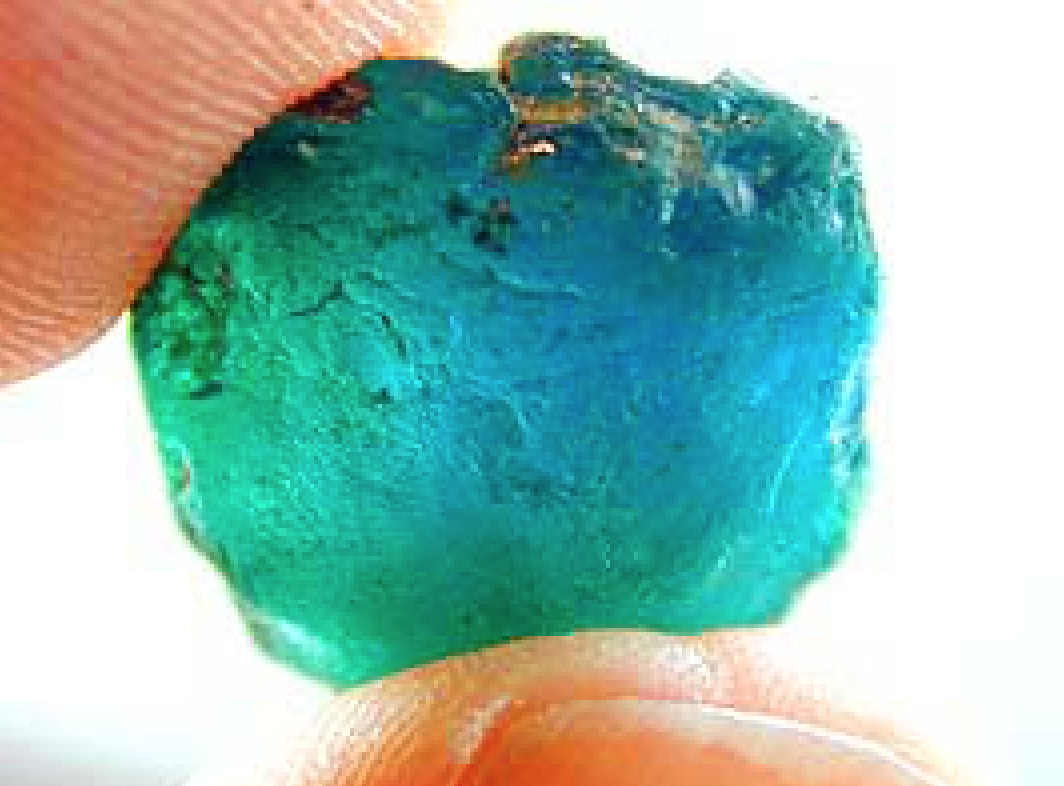A Look at African Paraíba Tourmaline Rough
Distinguishing African paraíba from Brazilian paraíba tourmalines is difficult. This gallery showcases bright neon specimens from Nigeria.
1 Minute Read
The Discovery of Paraíba Tourmalines in Africa
Paraíba tourmalines were first discovered in Paraíba, Brazil in 1989 and caused quite a sensation in the gem world. For a time, these vivid-colored, copper-bearing tourmalines were only found in Brazil. After the discovery of tourmalines of similar color and composition in Nigeria around 2000 and Mozambique in 2005, the gem industry generally used the term "paraíba tourmaline" as a trade name for copper-bearing elbaite tourmalines regardless of origin. The American Gem Trade Association and other gemological organizations have adopted this usage.
African Paraíba Tourmaline Colors
The colors of these African stones are truly spectacular. They are absolutely top quality. The pictures don't do justice to the teal, turquoise, and neon blue colors in these gems. It's just hard to believe.
Interested in this topic?
This article is also a part of our Tourmaline Specialist Mini Course, in the unit Tourmaline Varieties.
Treatments
I like the natural colors as they are, but it's common for African paraíba to be heated just like the Brazilian material. Heating makes the specimens lighter in color and tends to yield basically a uniform color across stones. However, this treatment also creates the bright "neon" tones that are in high demand. The temperatures used during the heating process remain a closely guarded secret. Nobody I knew was talking when I asked.
The material found around 1999 or 2000 amounted to very little. I have never seen African rough like this again and probably never will.
Jeff R. Graham
The late Jeff Graham was a prolific faceter, creator of many original faceting designs, and the author of several highly-regarded instructional faceting books such as Gram Faceting Designs.
Related Articles
Paraíba Tourmaline Value, Price, and Jewelry Information
Tourmaline Value, Price, and Jewelry Information
Mint Tourmalines: Gemstones for Our Times
Tourmaline Engagement Ring Stones: the Ultimate Guide
Latest Articles
Peridot Value, Price, and Jewelry Information
Traditional Diamond Cut Grading Methods
Cutting a 294-ct Trilliant Morganite: An Interview with Steve Moriarty
Tourmaline Engagement Ring Stones: the Ultimate Guide
Never Stop Learning
When you join the IGS community, you get trusted diamond & gemstone information when you need it.
Get Gemology Insights
Get started with the International Gem Society’s free guide to gemstone identification. Join our weekly newsletter & get a free copy of the Gem ID Checklist!
